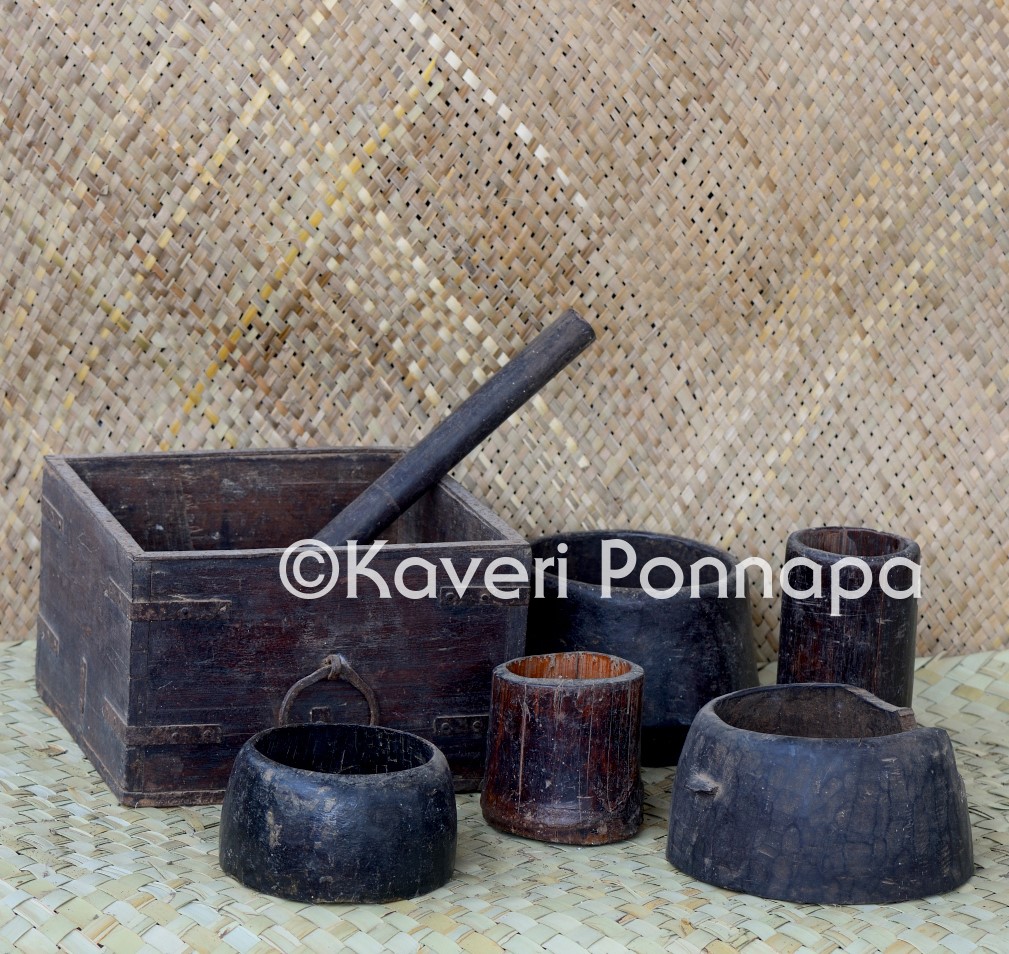
An assortment of wooden grain measures dating back to different eras. They were used to measure mainly paddy, as it was loaded onto bullock carts to be traded in Malabar or the plains of Mysore. Before the spread of a cash economy, rice was a medium of payment and the sére was commonly used to measure out grain to farm hands at the end of a day’s work.
Clockwise from upper left: paarae and paarae kol (a box-shaped wooden measure and stick to level the top after filling it with rice); paani (wide-based wooden measure, slightly tapered at the top); sére (cylindrical wooden measure); maana (wooden measure with a slightly rounded bowl); paani ; sére (the earliest example of a sére measure):
Old Measurments:
½ sére = 1 maana
2 maana = 1 sére
2 sére = 1 paani
1 paarae = 10 seer
1 batti = 8 paarae
1 gaadi = 8 paarae (one bullock cart load)
— From the collection of BP Appanna and Ranu Appanna

